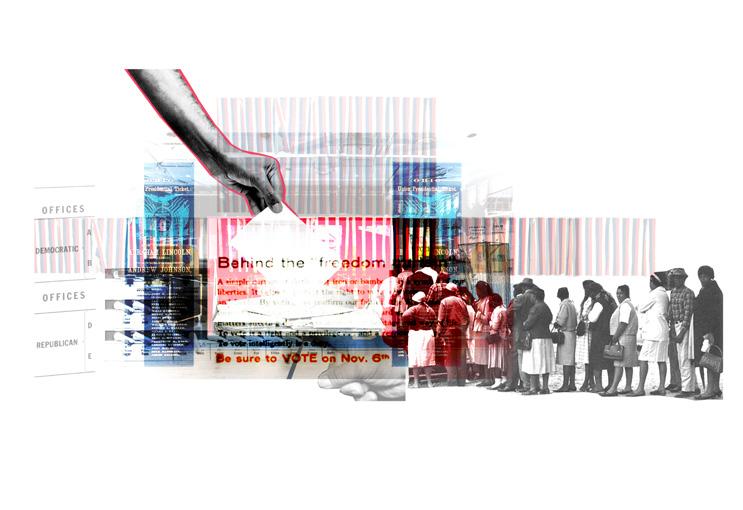
6 minute read
Archeology as Drawing
ARCHEOLOGY AS DRAWING
“The historian’s distortion is more than technical, it is ideological…”
Advertisement
Robert Zinn 28
History has a tendency to tell lies. "The history is right perhaps, but let us not forget, it was written by the victors." wrote Alexis Guignard de Saint-Priest in 1844. This sentiment, and others like it, are often credited to Winston Churchill and uttered commonly in popular culture as, "History is written by the victors." 29 Churchill represents the ultimate victor who wrote his own version of history about the very idea of who writes the history. It is the ultimate example of an ideological bending of the truth. Someone is always to gain by controling history. In all senses, this story promotes that to know a true history of an event, one is going to have to dig for it. One has to uncover the ideological fallacies that history holds, to do so takes an archaeological process.
Within the domain of this research, this archaeological approach became activated through drawing. Using a system of masking and cutting, a drawing can begin to play out the process in which the truth is hidden, offering a conceptual ground to dig into. This physically took the form of vellum sheets layered onto the "folksong reconstructions". Each layer took the role of a particular mode of history-making (see page 78). Using the knife as a tool to cut into the layers, the masks are pulled up, revealing the "truth" below (see figure 5).
Through this masking methodology, the ideological negationism, revisionism and reparation of history can be simulated; drawing becomes a tool to uncover history.
28. Zinn, Howard. A People's History of the United States. New York, NY: Harper, 2017. 8.
29. Matthew Phelan. ‘History Is Written by the Victors’ Was Not Written by the Victors. Slate Magazine. Slate, November 27, 2019.
COLLAGE CONSTRUCTION SEQUENCE
2 3 4
1 SUPERIMPOSE
Sources are collaged to create a document saturated with historical substance. 2 FOLD
Collage is folded into three-dimensional space speculating towards habitation and scale.

5 6 7 8

3 EXPAND
Folded collage is expanded making room for public engagement. 4 DISTILL
Information is pulled forward layer by layer from the folded document.
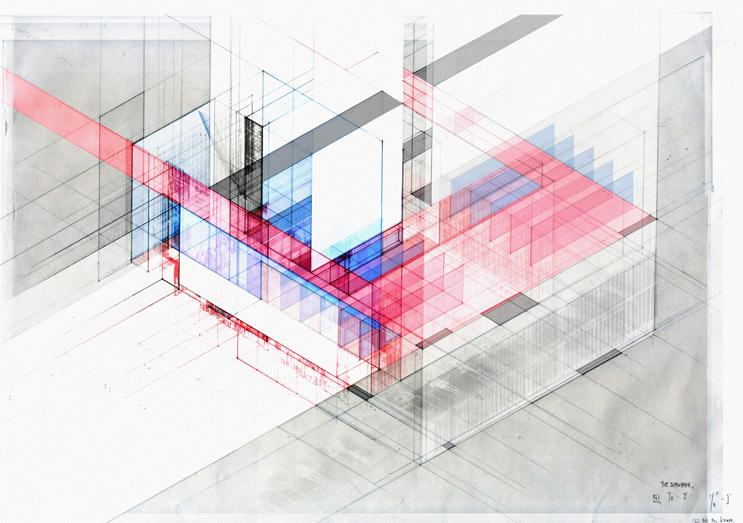
MASK CHARACTERS
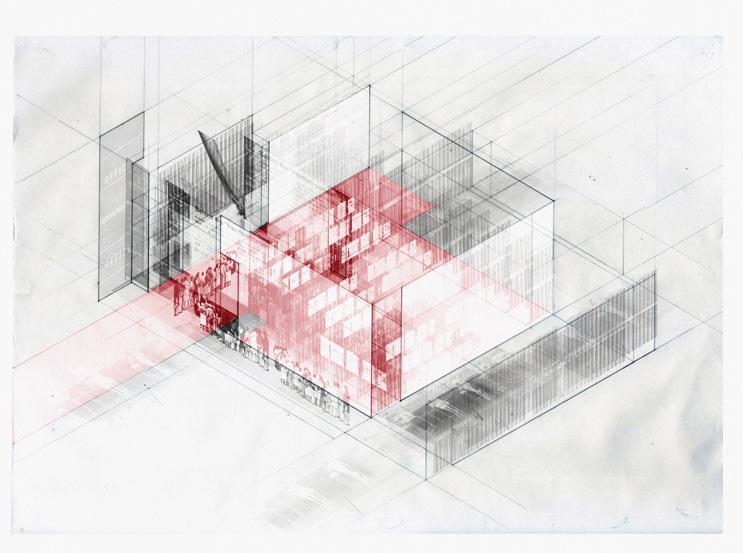

1 BASE
The voting volume, the act of voting as a spectacle. A public celebration of democracy.
Enclosing horizontal elements set stage for a popular occupation. 2 THE WORKER
The essential volunteer, a celebrator of democracy. A welcoming and directing body.
Massive volumes and diaphanous banners hold a welcoming pre-function space.

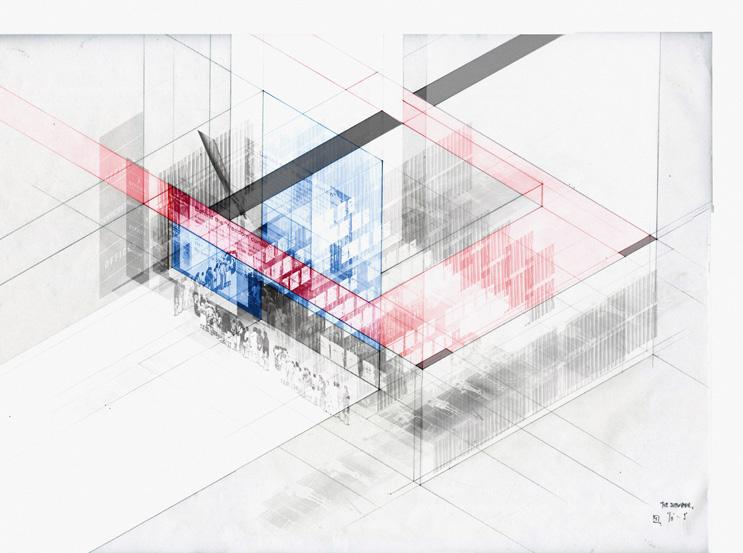
3 THE VOTER
The American populace, the common citizen with an uncommon task: deciding the collective future.
The voting space breaks down to the bodily scale. The intentions of the space is seen from the exterior; voting becomes an event. 4 THE INTIMIDATOR
The voter suppressor, a poll watcher, a distrusting soul, a barrier to democracy.
A walkable plane hovers over the voters. Veils come in from the side, enclosing the voting space, elements build a temporal pressure.
THE SEED
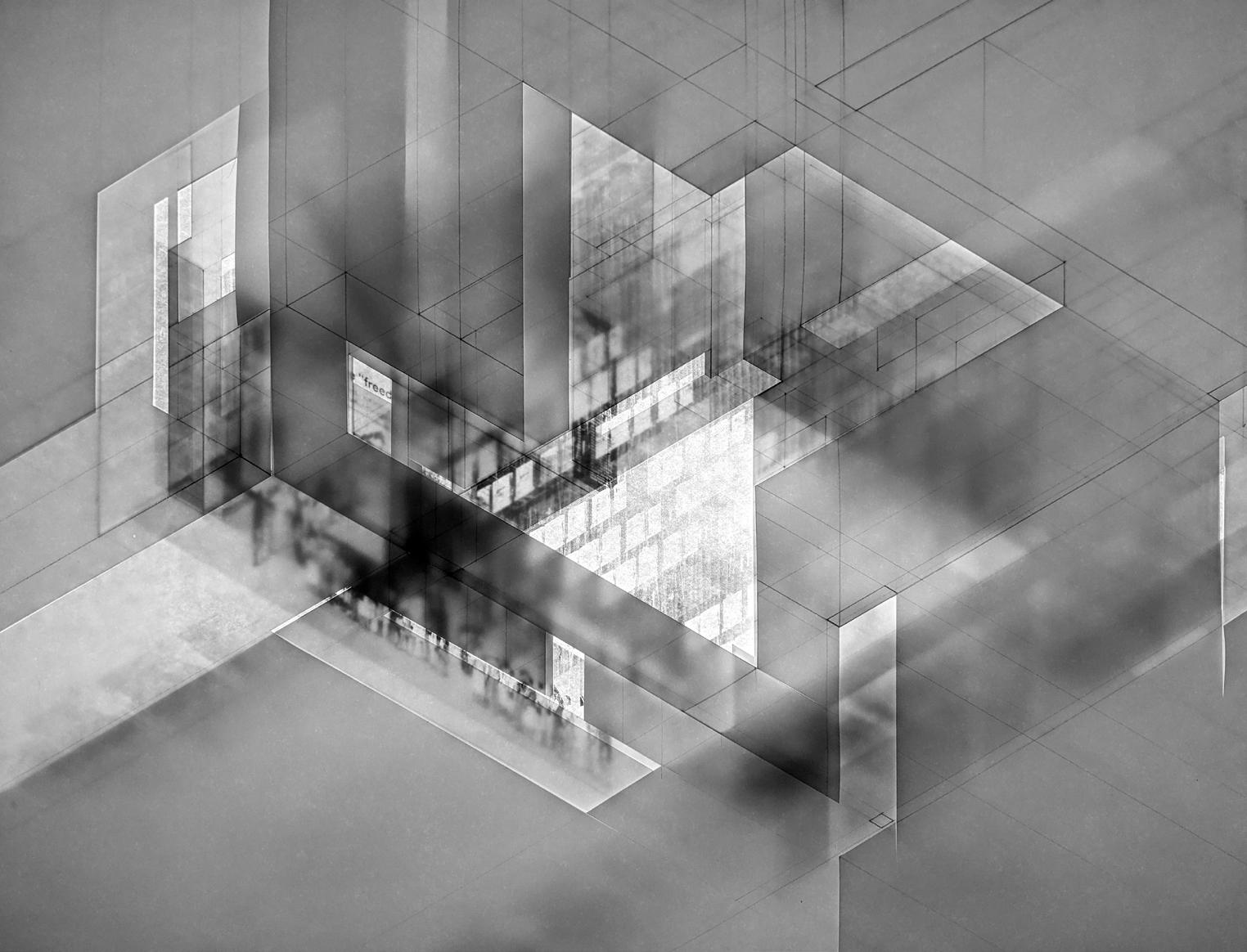
Voting Rights, layered collage. Photograph of vellum composite over light table.
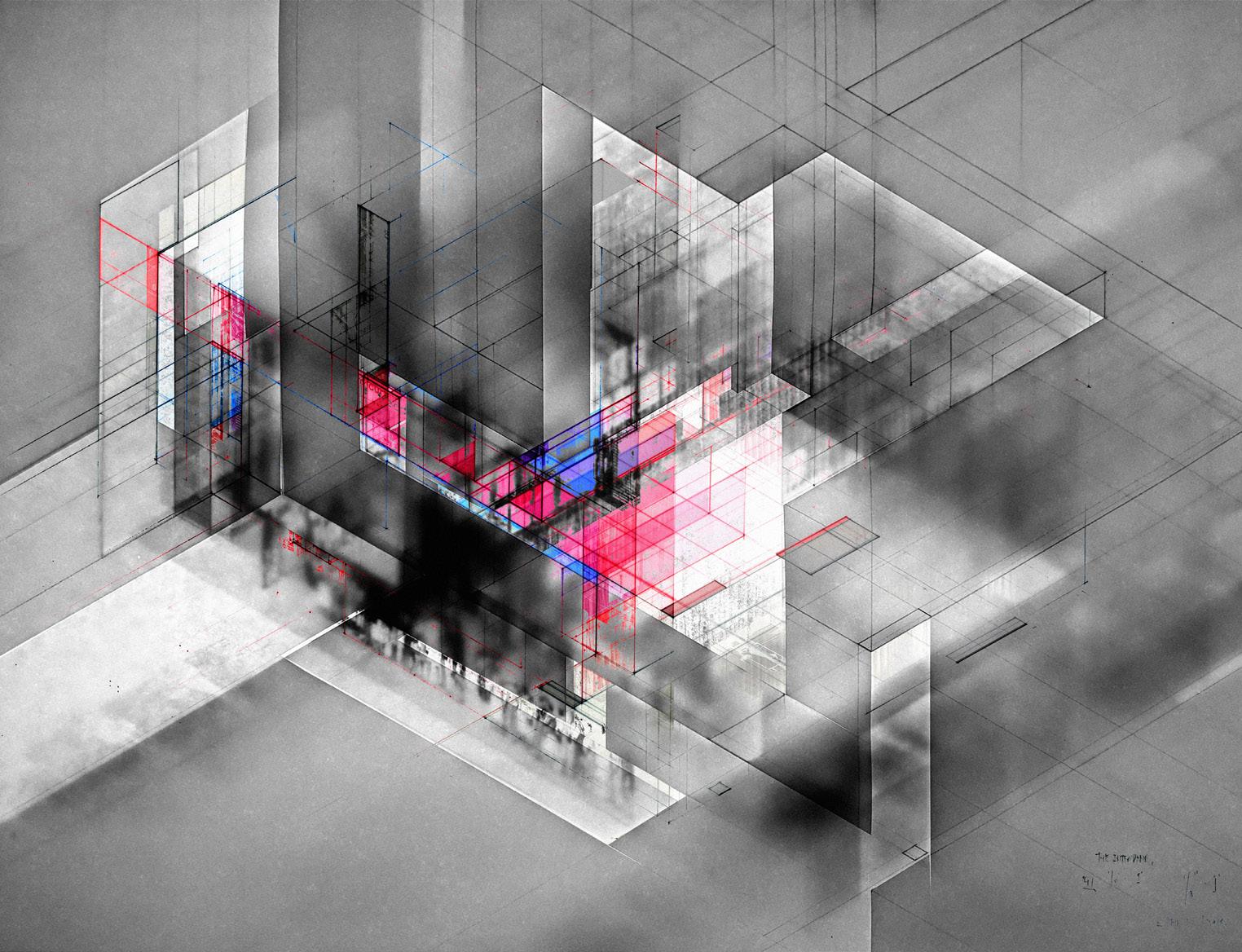
Voting Rights, collage and mask composite.
As a result of this exercise, the narrative is interpreted into a saturated document with ambiguous but direct spatial implications. This image is a seed, ready to be sowed and transformed into an experiential embodiment of the voting right folksong.
MASK CHARACTERS


1 THE NEGATIONIST
A true denier of history, the negationist, works to hide the truth. 2 THE REVISIONIST
An relentless seeker of the truth, the revisionist, cuts through the fog of the negationist, digging for a just understanding of the story.
Within this story, ground in which the buried remains of Rosewood are masked over. The old road that serviced the town is condemned. A new state road cuts through the forest North of the former towns center. The story of Rosewood is passed over. A new town, a collection of typical Florida homes with ample yards and privacy, is constructed just West of the forgotten city. In Rosewood, the forgotten town is rediscovered. Welding the knife, as a tool of uncovering, the Revisionist cuts through the cloud of confusion. The old town, shining symbol of Black independence and the atrocities of America, is revealed to a curious nation.
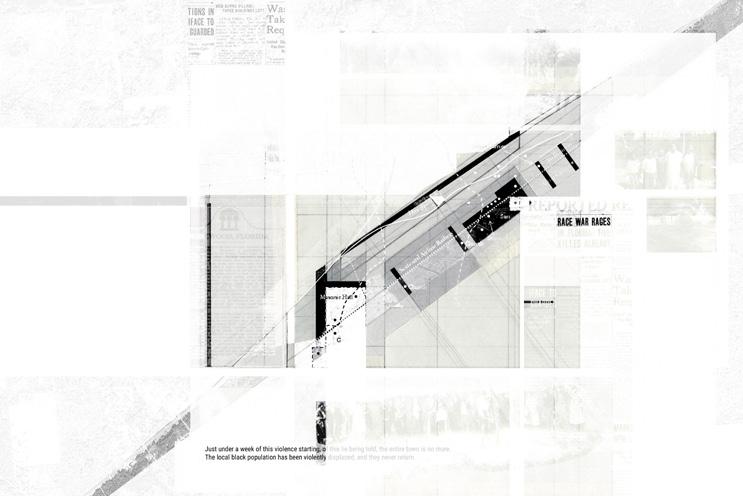

3 THE REPARATIONIST
A empathetic healer, the reparationist, is moved by the human stories held in their history and works to repair the sins of their ancestors. 4 THE ORATOR
A storyteller and keeper of an oral history, the Orator, announces to community the lessons of the past. Their myths, true or embellished, act as a moral compass for the community.
Listening to the discoveries of the Revisionist, the healer seeks to balance the past by building a better future. The forgotten landscape where of former Rosewood is openly acknowledged and linked to the present town. The plots where Rosewood’s proud residents once stood are cleared. Their descendants are given the land of their ancestors. They are given funds to establish a new town, they can finally create the American Dream that they’re forefathers intended to make. In Rosewood, the Orator constructs monuments that act as vestiges to the lineage of the new community. The speaker and their tools tell the whole truth, the tragedies and the triumphs of this remote corner of the Earth and how a brave group of former slaves founded, built and died to protect their blessings.
DIG SITES
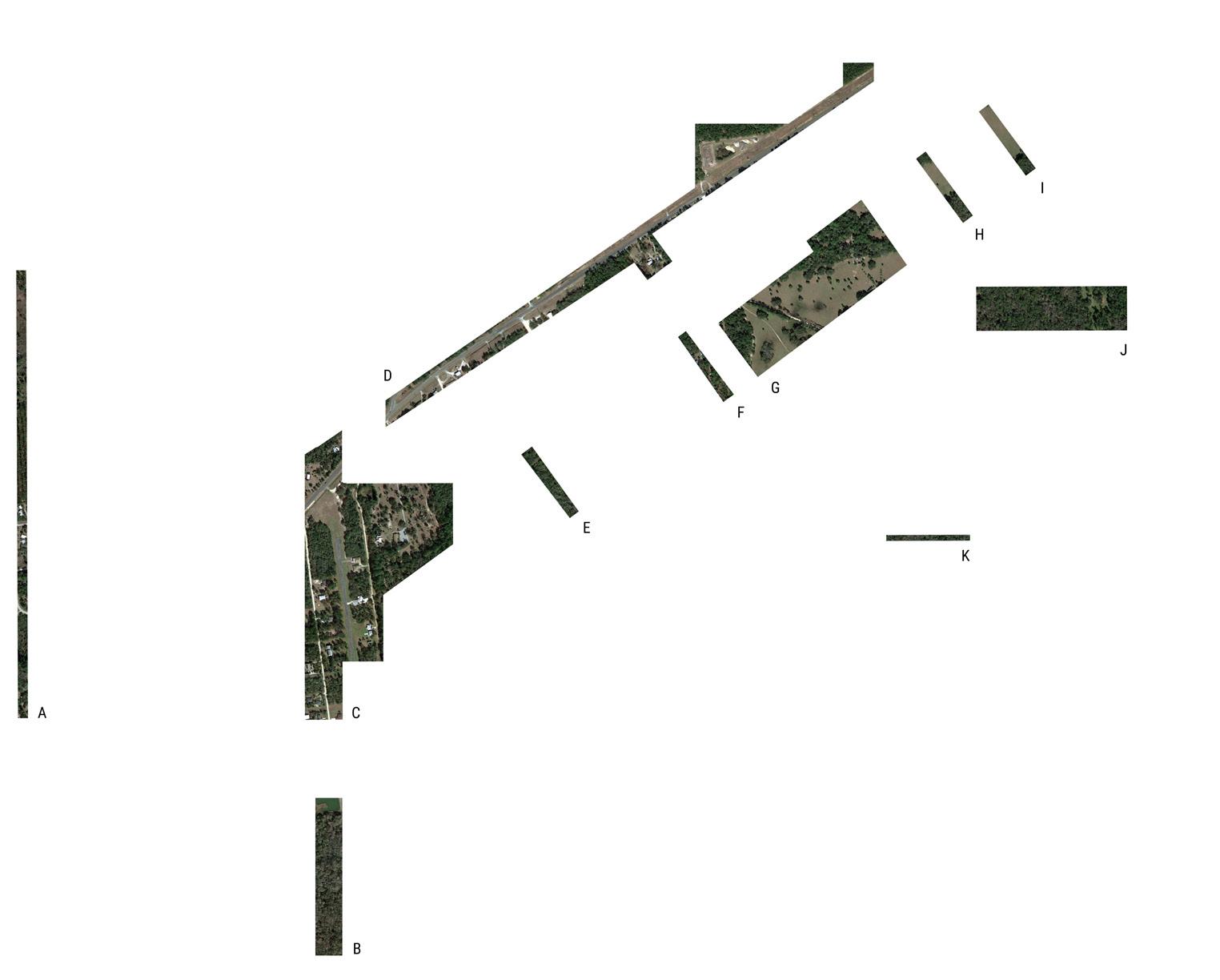
Dig Sites, swaths of land, discovered through the mask method are isolated for closer examination.
This process of constructing a historical document then masking and distilling those constructions down provided a new map of Rosewood. This map reveals a set of "micro-contexts" held within the "marco-context". This was a process of narrowing down a place into manageable swaths. Each one of these swaths of charged landscapes, can be called "dig sites", each deserving study and consideration, each site ripe for intervention. A set of re-contextualizing figures mark the landscape developing a re-sythesis with the past. Visitors, citizens can move between them, learning a personal understanding of the history of this charged place.
A
B
C
D F


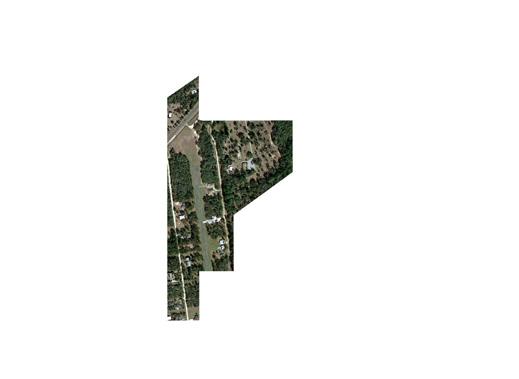
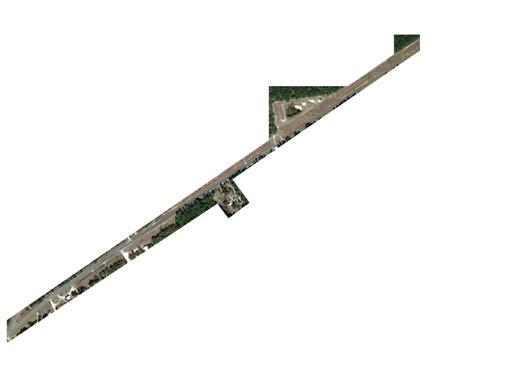

G
H
I
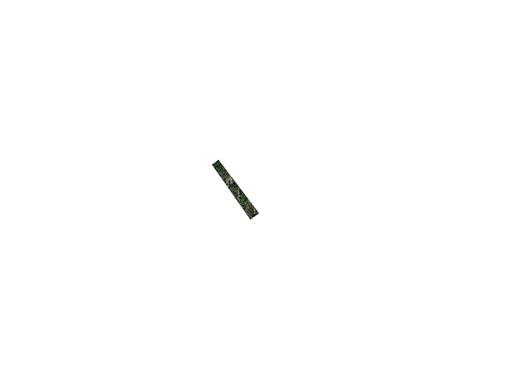




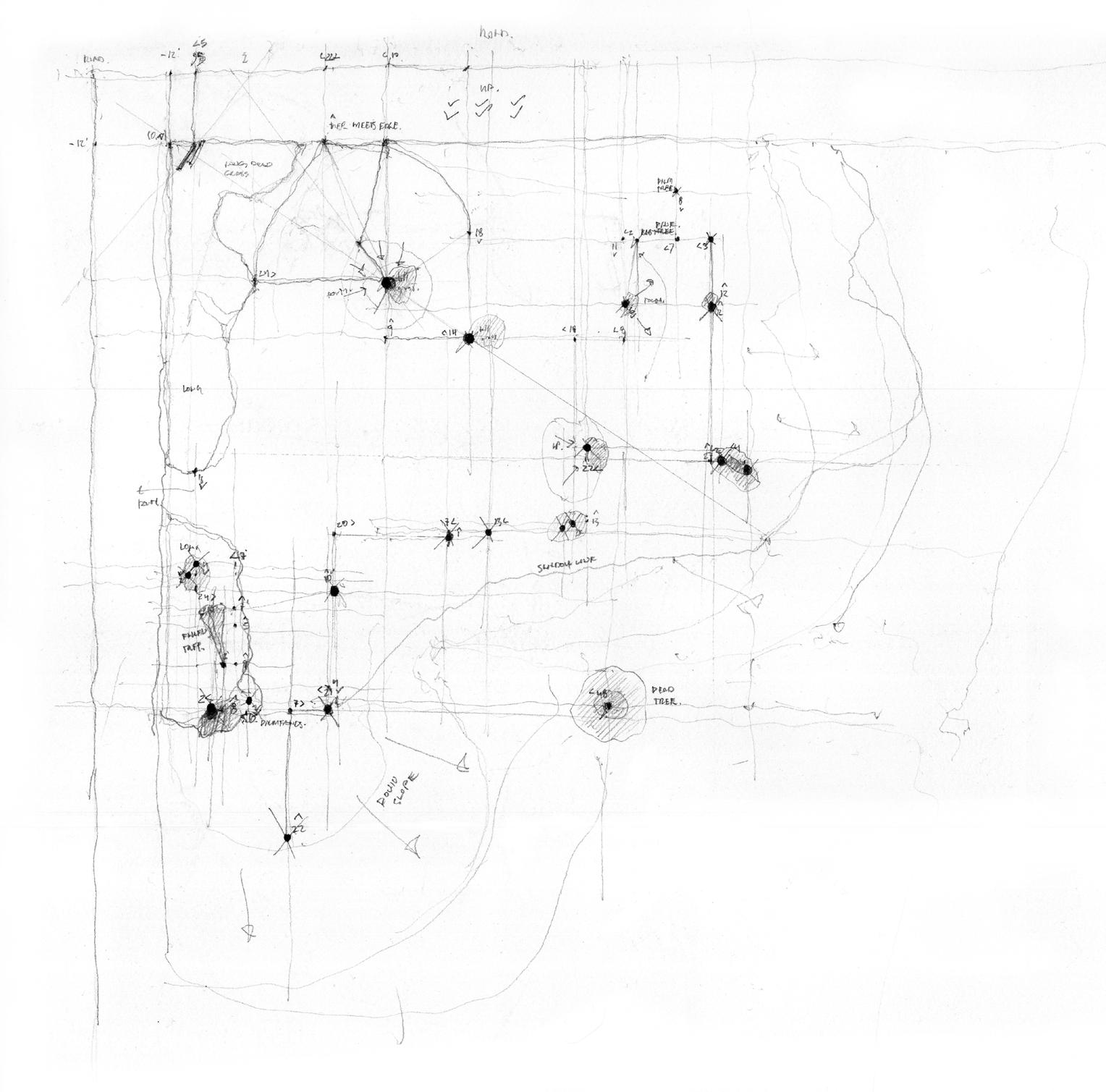
Figure 6, hand drawn map of Lynching Hammock in Newberry, Florida.










